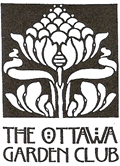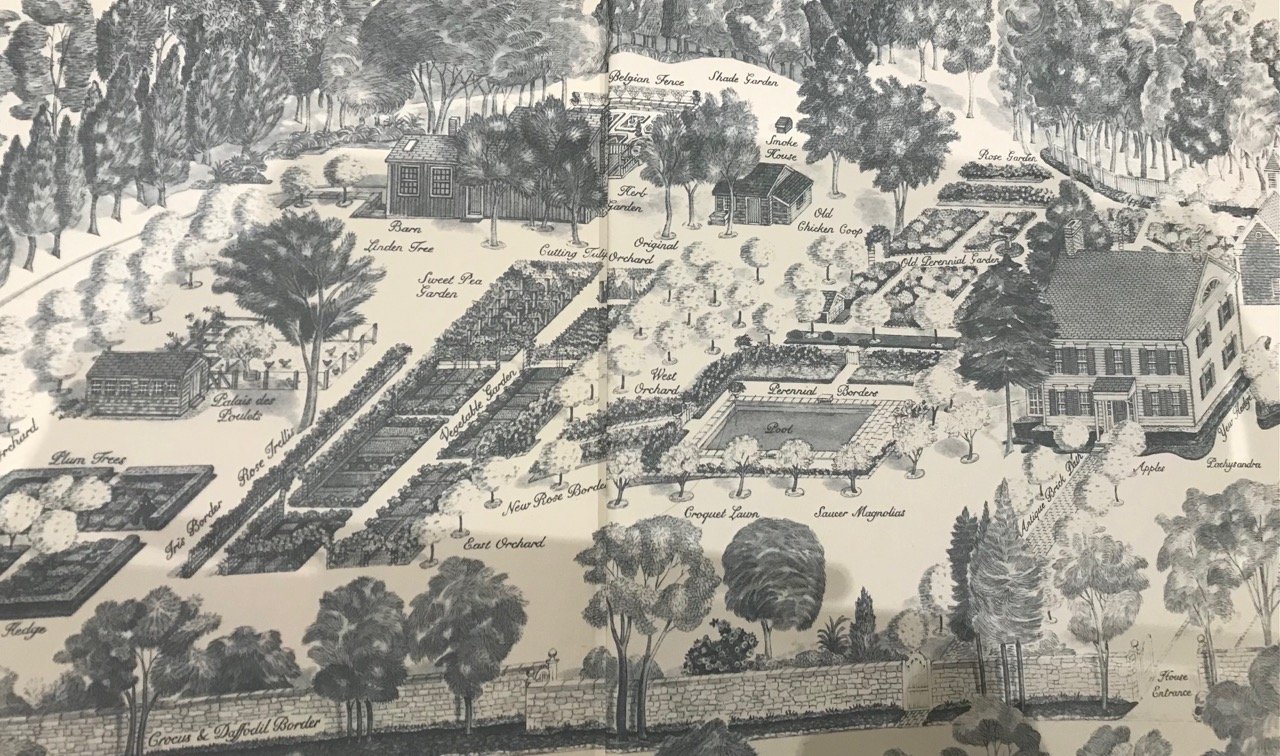A good garden book is one which teaches, inspires and guides you, and, is, generally, specific to your needs depending on where you garden. Every garden is unique…even if we were to put the exact same plants and hard-scaping in five different places, the resulting spaces would not at all be the same. Light, soil, drainage, neighbouring trees, weather, quality of plant material, etc., they all affect how your garden grows. So, if you understand all of these disparate elements, you will be able to succeed in making your front and rear yard, the pathways on either side of your home, and even your containers, grow better.
But how do you learn the gazillion things which make for a knowledgeable gardener? Of course, the internet is a wonderful place to visit, but to my mind, there is nothing quite like a book (and a couple of magazines to be dealt with in another post). Here are my top two books by far, and then a third one which serves to transition you from your home to your garden and then back to the house again, while doing a fairly good job of teaching some good garden practices.
This is a must have book for your library….
I would pick Hugh Johnson's book on gardening, The Principles of Gardening as the number one, absolutely must have book. My copy was printed in 1979, but while I am sure it is now out of print, I have seen it listed on some of the used book sites, often at a great discount…a great gift for any gardener, or even for yourself!! Yes, you might recognize the author's name, especially if you love wine. Hugh Johnson wrote the hugely successful, The World Atlas of Wine, as well as the The International Book of Trees, and has been the editor of The Garden, the journal of The Royal Horticultural Society.
The thing which makes this a fabulous general book is that the author is able to summarize, for the most part, the most important and complex information on each element of horticulture into a sentence, a paragraph, a page of information on each topic. While soil and roses and a few other topics take up more than a few pages, they are succinct, nonetheless - four pages compared to 30 or so in some other general garden books. So, if you start with this book, the other, more specific tomes will help fill in gaps in your knowledge, and before long, you are an expert in many areas. It really is as simple as that!
The first page of Johnson’s book is entitled ‘The essence is control’ and this is most likely the most important page to read if one wants to understand what is happening out there, in the soil and above ground in your garden. He speaks of plants as fighting for space and light and nutrients in the garden, and that it is man (and woman – this was published in 1979, so this, and probably some other things, as well, are a bit outdated!) who exerts control over plants in gardens for aesthetic reasons. ‘Shoving and elbowing for space is the kind of competition a gardener instinctively controls in the name of orderliness’, he says
So that, in a nutshell, is what is happening in your garden, and how you control the plants within is up to you. You make your garden what it is...perhaps you like to deadhead Rudebeckias, and another gardener might like to leave them up for the seedheads - the look is completely different. Some people like to grow small bulbs up through dying tulip leaves , some plant annuals in that space. To some, self-seeders are welcomed, while other gardeners despise them and rip them out with great glee!! Some people are successful with a rock garden because of their soil, while others have moist soil, so no alpines for them.
This explains why every single garden is different. Although this seems a relatively simple thought, it is truly the basis of gardening and how we choose to construct and control our landscapes. Once we master the elements which are constantly changing out there, then we go from one success to another.
The titles of each of Johnson’s topics gives you a good idea of the range he covers. The wind and the rain….Your local climate…..The soil as a reservoir…..How to look at a plant…..The greenhouse: total responsibility…..Shrubs, the backbone…..France since Le Nôtre…..Composing the picture….the choice of paving……and about 30 pages he calls ‘A gardener’s Directory, with names and dates and definitions and stories of plant collectors …and on and on.
As I write this posting, it reminds me that I want to re-read this book, even so many years later. It really is a fabulous resource.
Excellent book for your library — you’ll find everything about gardens between the covers!
The second most helpful book in my library is the Reader’s Digest Practical Guide to Gardening in Canada (published in 1993). It replaces a slightly older book, The Illustrated Guide to Gardening in Canada (1979). The earlier version has line drawings whereas the one published in 1993 has photographs, but apart from that, they are pretty similar. You will take in a huge amount of information from either of these volumes as all is very clear and concise with very good illustrations. I hope you have been lifting your weights, however, as both of these books are very, very heavy!! Start reading them over the winter so you can build those muscles before the gardening season arrives!
Both books were published in England first, then the Canadian versions showed up a year after the British ones. Both are out of print, but can be bought through used book sites such as Abe Books. It is reassuring that the Canadian versions were reworked by someone we are all familiar with – Trevor Cole – Curator of the Dominium Arboretum here in Ottawa. He had been involved in horticulture all of his adult life and knew the Canadian climate and the challenges of growing plant material here intimately. Everything is there – pruning, planting, grafting, espaliering of fruit trees, planting bulbs, garden design, lawn maintenance, growing orchids, pests and diseases, choosing tools for the garden, and much, much more…A great resource book for everyone’s library.
Here she is — pretty, smart and ready to teach everyone how to garden…properly!
And now, for my confession and explanation of my third choice, which is (gulp) Gardening, Month by Month, by Martha Stewart. I know, I know….what did she know about gardening? Well, it just so happens that she knew an awful lot! In gardening as in folding napkins 100 different ways, the proper way to remove dripped candle wax from your table, making perfect beef Wellington, putting up tons of jams and jellies each year, or how to knit a coat for your dog, well, Martha knew how to do it all.
September, 1992 changed my life. I went from an elementary school teacher to a long-distance caregiver to my parents to a horticulturist (yes, you read it correctly – Horticulturist, and not Horticulturalist). And it was that year when a Martha-mad friend gave me this book as a present. At the time, Martha was really something. Her stint in jail was impossible to foresee. Her getting older and more smug wouldn’t happen, couldn’t happen, to her! She was young and beautiful and very successful in 1991 when this book was published. I (and millions of other women, many of whom would not admit it out loud) wanted to be just like her - in my case, to be like Martha the gardener.
I said earlier that a good garden book is one which teaches, inspires and guides, and this one certainly did all of those things for me.
Martha, the gardener, made a link between her outside space and her inside space, and she made the passage from one to the other seem effortless and desirable. The essence was control…. And boy, was she in control! I’m not sure anyone had made this link from house to garden (and vice versa) work quite as well as she did. Her gorgeous collections of placemats and china, for example, and silver containers, all beautifully polished (perhaps by Martha in her spare time??) made lovely vignettes in the garden spaces where she hosted Easter Egg hunts for small children. She also served scrumptious meals accompanied by magnificent wine glasses I would never even put at our formal table inside, never mind on a table outside! And then she brought the outside in….. Cutting bare branches of crab apple and Forsythia to be forced indoors; planting giant Amaryllis in antique cache pots to bring colour inside to warm the long winter days; painting pumpkins from her pumpkin patch with gold leaf for the Thanksgiving table, and who could forget the fantastic bouquets from the massive collections of flowers and more in her wonderful, English-inspired garden. The garden and the house would always, for Martha, be linked.
She was in control – she had learned the secrets of horticulture. We all knew that she had a magic touch inside, and now, through this book, we understood how she now knew how it could all work outside as well.
When I received this book, it spoke to me. Martha went into minute detail about all manner of things. The photos were wonderful (they now seem a bit faded, but I guess we have made great strides in digital photography since then, so I forgive her that…) and she seemed really to be out working in her garden. Of course, no one would believe that she looked after her beautiful home in the Northeastern United States all on her own, but it sure looks in the book as if she was doing a lot of work in it and getting dirty doing so – from design to digging; planting to pruning; harvesting and dead-heading. She did it all. She was a legitimate gardener. Hmm, maybe I could be too…?
I read on the first flap of the book that she started helping her father in his garden at the ripe old age of three! (I guess to know everything, one needs to start early!) And, very genuinely, she dedicated the book to many people, starting with:
Pour l’avenir
To the Children
Who depend on us to garden
For their future
And ending with
Most of all, my thanks to my father, for being my first teacher
of gardening. His love of growing things was transferred to me through our
gardening together; I will remember what he taught me forever.
September, 1992 changed my life. And so did this book. Whether it was the aura ever present around Martha, her control over anything she touched, the ‘I can do this too’ feeling when I read how she worked in the garden, or whether I was just seduced by the wonderful drawings of the lay-out of the house and gardens in Westport. Conn. , or even Maybe I was taken in by a very savvy PR job, I don’t know. But I keep coming back to this book, always learning something from it.
It is out of print now, but available on Abe books and other second-hand book sites. A good gift for a gardener friend who needs to be inspired, or maybe even a gift for yourself! It has all of the best of Martha, and lets the worst of her melt away somewhere in that garden of hers. Keep telling us how to do things well, Martha. We sure need some of that in our lives these days…!
The beautiful drawing on each end paper of Martha’s book. I must have looked at this drawing a million times!




